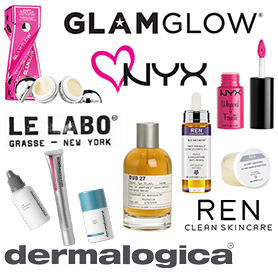GlamGlow, NYX, Le Labo, Ren, and Dermalogica are among several of the hottest formerly indie brands sold in the intense string of beauty acquisitions over the past two years. Coupled with problem-oriented, niche, and innovative products to reach specific demographics, such as millenials, Generaration Z, baby boomers, and multi-cultural groups, the independent beauty brands experiencing growth of nearly 19% in 2014 are the acquisition candidates explored in Kline’s recently published report Beauty’s Most Buyable Brands: Analysis of Booming Independent Brands in the United States. With the assessment of approximately 100 privately-owned beauty brands and the subsequent selection of top gems, the study goes beyond regular analysis and points to which are the most buyable ones.
While the overall cosmetics market grew at a compound annual growth rate of over 3% between 2009 and 2014, independent brands as a whole experienced double-digit growth of nearly five times the market average during the same period. In 2014, 20 independent brands post double- or triple-digit growth. Among the 10 fastest growing is a blend of brands targeting various niche needs from eyebrow care to skin care remedies to natural oral care products.
These brands often referred to as indies, drive acquisition activity in the industry. While they are a driving force for larger companies and PE firms, being acquired also serves as a catalyst for their own growth as it opens new doors, creates a greater investment in research and development, and helps bring these products to a larger number of consumers.
“Independent companies interact more closely and frequently with their consumers, allowing these companies to respond and innovate quickly to reflect the changing needs and tastes of consumers,” comments Karen Doskow, Director at Kline’s Consumer Products practice. “For example, CEO Craig Dubitsky of Hello Products, an oral care company experiencing triple-digit growth in 2014, answers all consumer e-mails and even provides consumers the chance to Skype with him on the company’s website. This shows a major difference between how a major company and an indie company have the capability to interact with consumers.”
The rise of social media marketing, available at a nominal investment, also gives rise to these brands that, in turn, are able to compete with the marketing budgets of the leading players. Independent brands effectively captivate their audiences through YouTube videos, Instagram pictures, and blog articles that have given way to new forms of advertising. User-generated reviews are an important resource women turn to prior to purchasing makeup, and beauty bloggers can easily influence the purchasing decision of a consumer. Smart brands utilize these activities to influence consumers’ purchasing decisions.
NYX, e.l.f., Anastasia Beverly Hills, and Too Faced are among the top ranked beauty brands across social media platforms. At the end of 2014, Anastasia Beverly Hills was the top performing brand on Instagram. The brand also saw the highest Engagement and Impact scores, demonstrating that its mix of offerings from professional visuals to user-generated content is propelling Anastasia Beverly Hills to the top.
Younique, a natural skin and hair care company, puts a “younique” social spin even on the way they sell products by empowering its Sales Presenters to advertize products almost exclusively through social media by holding virtual parties with consumers on social media platforms. “In this day and age, where social media has become an integral part of consumers’ lives, this approach adds a modern spin to direct selling, a retail model struggling in the current environment,” comments Kelly Alexandre, the analyst of the research.
Kline’s Beauty’s Most Buyable Brands: Analysis of Booming Independent Brands in the United States report analyzes the dynamics of independent brands and their success factors, discusses mergers and acquisitions, profiles the fastest-growing indies, and provides a five-year outlook on the market.

